How to Write a Request for Proposal Template, Including Design and Content Templates

There will come a time in almost every organization’s life when a Request for Proposal template will be needed in order to attract competing bids for a product or service that will help you meet your business goals.
Writing a Request for Proposal template effectively will be key to attracting the best bids from third-party vendors and contractors’ companies able to deliver the services or products you seek. And, as is the case with everything, there are good RFPs and bad RFPs. The best ones are clear, concise and customized in a way that elicits the highest quality responses.
The RFP process can seem daunting initially. However, if you approach RFP development thoroughly and methodically, it needn’t be. Writing an effective RFP should strike a critical balance between asking for too little and too vague information and asking vendors to provide too much.
In this article, we shed light on the process, sharing important information, tips, RFP examples and RFP templates to help guide the creation of your Request for Proposal template.
What is an RFP?
A Request for Proposal is a document issued by a company, government organization, crown corporation, not-for-profit or non-governmental organization (NGO) to solicit critical information, typically in a proposal format, from several qualified third-party vendors or suppliers for a product or service. It often forms the foundation for the contractual agreement issued to the successful proponent.
Similarly, a company may issue a Request for Quotation (RFQ), a quantifying document, or a Request for Information (RFI), an educating document; however, RFPs are typically more comprehensive and collect both costing quotes and company information. They are lengthier, more detailed and more formal, outlining strict procurement rules and response guidelines. Ultimately, they are issued so the issuing company can compare the offerings of a range of product or service providers.
Why Issue an RFP?
An RFP is typically issued when a company needs to augment its capacity in some way by soliciting the services of a third-party vendor or securing a product offering (i.e., accounting software) necessary to enhance productivity or achieve business goals.
By initiating this process, an organization (i.e., “Buyer”) can effectively compare the value propositions of a set of competitors in a given industry space. By issuing an RFP, they gain a better understanding of the competitive landscape, collecting specific company information about leadership, resources, pricing, methodology and approach, product or service offerings and anything else needed to differentiate companies and drive the selection of a successful proponent.
An RFP also encourages fairness in the vendor selection process by delivering transparency – explaining how and why a proponent is chosen. For this reason, RFPs are the preferred or required procurement option for government.
Key Parts of a Request for Proposal Template
Though every request for proposal is different, some important considerations and questions are generally included.
Before embarking on RFP development, an organization must have a clear objective in mind. Only then can the document be crafted in a way that clearly articulates its purpose and solicits quality bids from proponents or bidders, making the selection process more effective.
In general, most RFPs include the following sections. Additionally, other sections tailored to the project and the industry can augment this list:
Company Introduction
Provide a summary description of your company, including some history, capabilities and vision.
Project Background and Intent
Provide a high-level overview of the project, including a summary of your specific needs and intended outcome for this process. Discuss any projects, consulting engagements or business decisions that drove the need for the RFP. It will help proponents craft their responses in a more targeted manner.
Scope of Work
The scope of work (SOW) is the most critical part of the RFP. It will form the basis for the vendor relationship once a successful proponent is announced and awarded the contract. Thus, it is paramount that you do your research and involve critical stakeholders with deep knowledge of the project, product or service to best articulate the SOW.
The SOW sets expectations and will help prospective bidders determine if they can deliver what you need and submit a competitive proposal. Make every effort to be transparent when providing your background and scope.
Financial Section/Pricing
You must diligently prepare and articulate your project scope to solicit meaningful and accurate financial submissions from proponents. This exercise will help inform how you structure the pricing portion of the RFP so proponents have enough information to accurately develop a pricing strategy that costs out their service or product delivery. As a company, you must decide whether to elicit a fixed bid price or a time and materials quote.
It is also recommended that you solicit input from stakeholders in your company and conduct market research to determine what a reasonable budget might be for the product or service, so you have a benchmark for assessing submissions.
Mandatory Requirements of a Request for Proposal Template
Consider and list the fundamental attributes vendors must possess to be in the running. This section is critical to determining whether a proponent has the essential credentials, skills and capacity to enter into a service agreement with your company and deliver to the outlined scope. You might ask for proof of insurance, worker’s compensation certificates, financial stability (i.e., financial statements, bank letters), ISO certifications, delivery guarantees, language capabilities, and anything else deemed necessary for project success.
Technical Requirements
It is here you will include the project-specific criteria that will help you select a proponent:
- Project Approach and Methodology – Ask bidders to describe their approach to the project in sufficient detail to demonstrate the capabilities and methodology they would employ to deliver the project successfully.
- Proposed Project Team – Ask bidders to provide biographies (and resumes) for the proposed key team members, including their relevant skills, knowledge and experience, and roles and responsibilities on this project.
- Reference Projects/Project Profiles – Ask bidders to provide profiles of relevant, successful projects they have completed, preferably within the last three years. Profiles should include a description, project duration, and budget.
- Risk Mitigation Strategy – Ask bidders to define how they assess and mitigate risk.
- Environmental and Social Responsibility Policy/Statement – Ask bidders to describe their commitment to sustainability and social responsibility, sustainability practices, initiatives and track record on environmental and social responsibility.
- Diversity and Inclusion Policy/Statement – Ask bidders about their commitment to diversity and inclusion and how they foster diversity in the workplace.
- Value Add Services – You can ask proponents to provide additional content on their services that may add value to their submission and be of interest to your company. This section allows bidders to share information on all their capabilities above and beyond those discussed in direct response to the RFP requirements.
Evaluation Criteria and Scoring
RFP evaluation criteria inform the scoring of vendor proposals and your selection of the successful proponent. It is an attempt to remove subjectivity from the process by standardizing the measures of proposal success. You can create two categories – Mandatory and Desirable Criteria. For consideration, proponents must first meet all the mandatory criteria. Then their ability to meet the desirable criteria will be used to evaluate their bids.
Carefully consider your specific needs and decide how much detail you need to make the right decision. With this in mind, determine what factors will drive your selection and list the evaluation criteria. It is helpful to include weightings for the various criteria so vendors know what to emphasize and where to spend their time best. By defining your priorities, you ensure respondents spend the most time preparing meaningful responses to the questions that matter the most to your organization and the selection process.
If there is an incumbent, ensuring fairness is particularly important. Every effort must be made to provide all bidders with the same information the incumbent may have acquired over the tenure of the existing contract. Moreover, devise evaluation criteria in a way that is not preferential to the incumbent. Vendors are happy to compete, but the selection process must be fair.
RFP Timeline
In addition, to a deadline for queries and submissions, the RFP timeline may also indicate when a short list of proponents will be announced, dates for presentations by shortlisted candidates and finally, a contract award date.
Set realistic deadlines to attract the best possible responses from the most qualified bidders. Remember, an entire proposal team is often required to build a quality RFP response. Subject matter experts, sales and marketing teams, finance departments and more might need to take time away from their regular duties to contribute to the effort; thus, be sure to provide enough time. Also, provide sufficient time between question deadlines and the proposal submission date to allow bidders to incorporate new considerations and make possible revisions to their proposal content.
Response Format (i.e., Numbering, Sections)
To better compare responses, it is highly recommended that you impose a format for proposal responses. This can be very specific, stipulating section numbering and length or more general, stipulating sections only.
Terms and Conditions
Include any legal terms and conditions required by your company by which bidders must abide. These could include protection of privacy, copyright, conflicts of interest and collusion.
Supporting Appendices
If there is any additional information you’d like to share with prospective bidders or collect from them, include it as a supporting appendix.
In some cases, financial information is requested in an appendix to be submitted separately from the rest of the proposal. This is done so proposals are evaluated on their merits first without financial or pricing bias.
Sample Request for Proposal Templates
We highly recommend developing your own RFP templates. It may be tempting to use incumbents or competitors, but it is ill-advised. Having read and assessed thousands of RFPs, many are poorly designed and structured, riddled with errors and confusing. Conversely, others have been expertly crafted to successfully elicit high-quality responses. Furthermore, the RFP development process can play a crucial role in defining and refining the criteria that, ultimately, will inform your choice.
We’ve provided some templates and examples to help initiate your RFP development process that can inspire and guide your efforts.
Request for Proposal Template – RFP Cover Page
It should feature your brand and logo prominently and all critical information, including:
- Name of Request for Proposal
- Assigned Number
- Issue Date
- RFP Closing date and time
- Contact Person
- Contact Phone number
- Contact Email
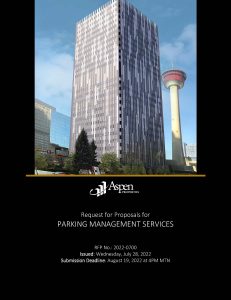

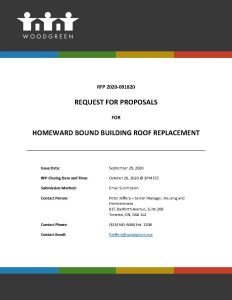
Request for Proposal Template – RFP Table of Contents
This is an important reference guide ensuring proponents can navigate to sections easily. A dynamic table of contents (TOC) linking each TOC heading to the appropriate section is recommended if this is a digital format proposal. Make sure it includes at least two heading levels.
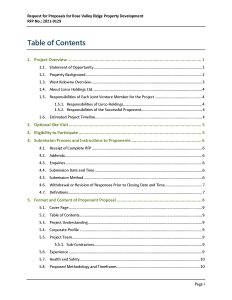
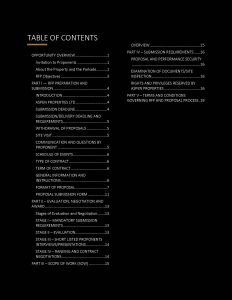
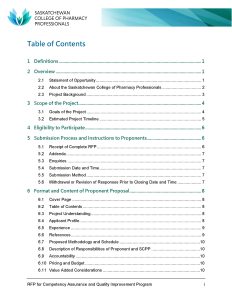
Request for Proposal Template – Scope of Work
It is critical that you get this section right. It needs to be succinct in describing the opportunity yet provide specific enough detail to ensure you attract the right pool of vendors. You should articulate project goals, deliverables and/or expected outcomes, estimated project timeline (a start date or end date at the very least), and other details regarding the scope of work. It is also important to include some background information on your company, the project like key drivers, relevant previous work performed, operating environment etc.
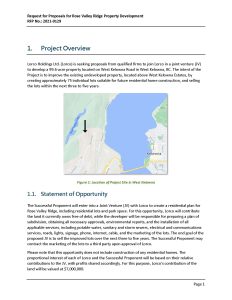
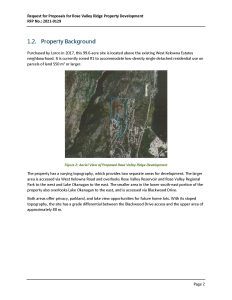
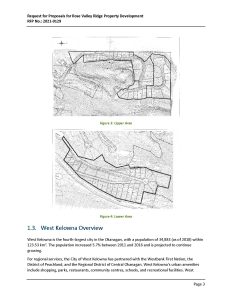
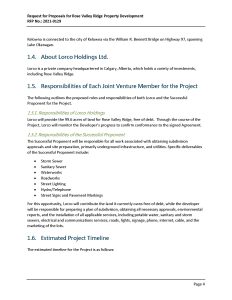
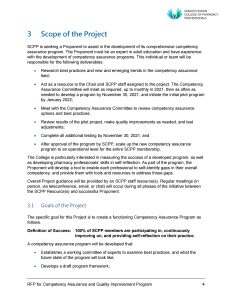
Request for Proposal Template – Instructions to Proponents (How to Respond, Key Milestones)
When devising a list of instructions, the level of detail can vary greatly depending on your company’s established protocols and processes. Government RFPs, for example, often include precise submission instructions requiring proponents to follow prescribed formats, specific section numbering, and word or page limits in addition to key milestones, deadlines and submission methods (i.e. email, via a software platform, hard copy). Others, in contrast, simply provide submission deadlines and methods.
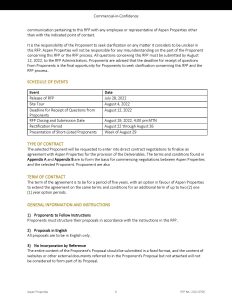
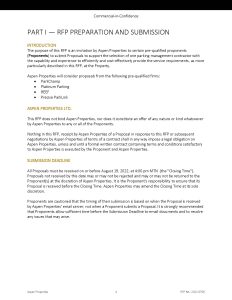
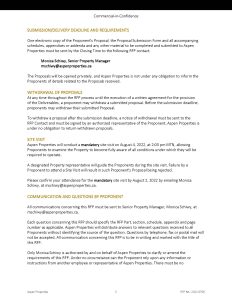
Request for Proposal Template – Evaluation Criteria
This is where you list mandatory and desirable criteria and the weightings for each category of the requested information. It explains to the bidder how you will score each submission and choose the right vendor for your project. You will see in the examples below several ways to relay this information to the proponents.
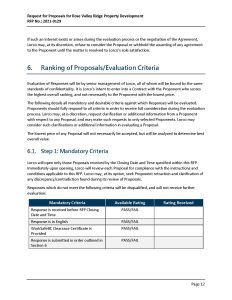
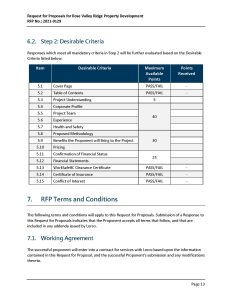
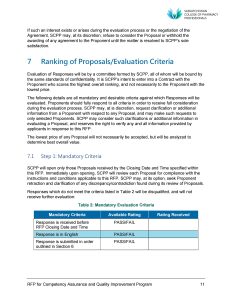
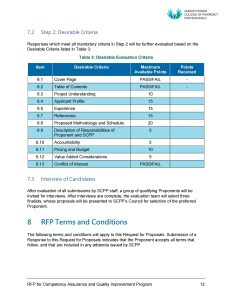
Request for Proposal Template – Addenda
Typically, addenda are issued after the RFP to answer questions from bidders or to share changes or revisions to the original RFP. This information might include deadline extensions, additional requirements, clarifications, or corrections. They are shared publicly to ensure all prospective proponents receive the same information.
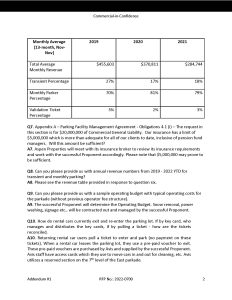
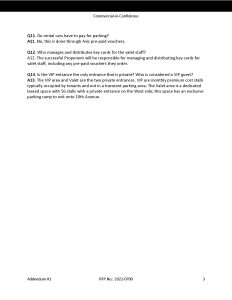
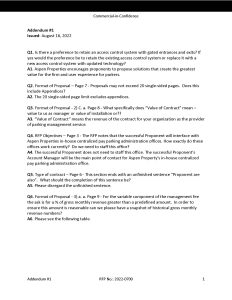
—-
If you do not have the time or resources internally to create your request for proposal template, or if the process seems daunting, Outsource Marketing offers RFP development services designed to help your company secure the best service or product provider to meet your business objectives.